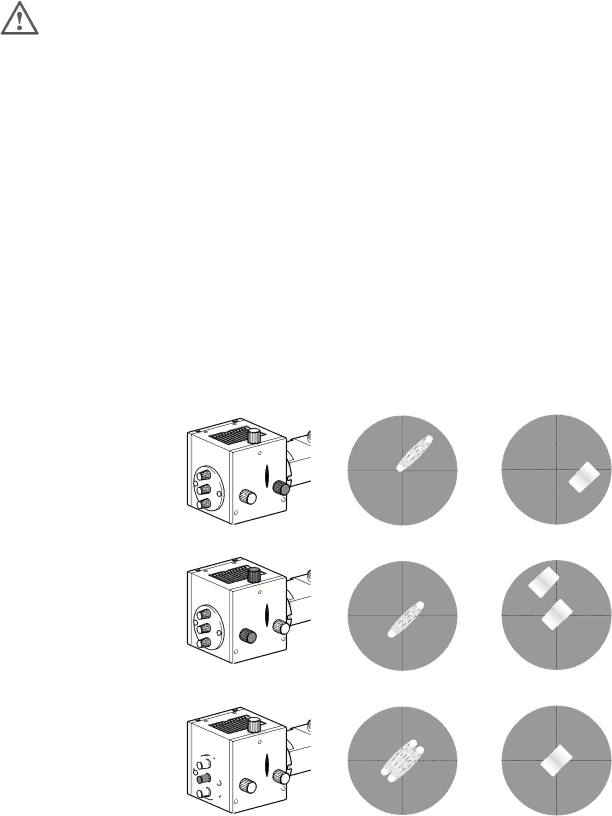
Adjusting the mercury vapour lamp
This adjustment is important for obtaining a uniform light spot and
While adjusting the mirror image, do not project light on to the electrodes for long periods (risk of explosion through overheating)
The two electrodes are imaged as an extension of the plane of symmetry of the discharge arc, but are difficult to see..
▶Switch on the supply unit and wait for two or three minutes
• The 100W supply unit emits a whistle
▶Swing out the
•Work without the
▶Pull out the light stop (see page 16, MZ10 F and page 22, Fluorescence module)..
▶MZ10 F: Turn the filter set in the beam path (page 16)..
▶
▶Mark a cross on a piece of paper and place it in the middle of the illuminated spot
▶Select the lowest magnification
•The discharge arc is visible in the illuminated spot and lies
at about 45° to the lines of the cross (fig.. a)
▶Look into the eyepieces and focus on the cross
▶Using your unaided eye, observe the discharge arc on the paper and bring it into focus with the focusing knob (3) (fig.. a)
▶Using the positioning knobs (1 and 2), displace the discharge arc (fig.. b)
▶Bring the mirror image of the discharge arc into focus
with the knob (6) and use the knobs 4 and 5 to position it
symmetrically relative to the original image (fig.. c)
•For the 50W burner, the
•For the 100W burner, the
▶Using the focusing knob (3), readjust the illuminated field
•The illuminated field should now be large, circular and as uniform as possible
▶Reposition the
Hg 50W | Hg 100W |
Figs.. a: Bringing the discharge arc into focus
3
1
Figs.. b: Positioning the discharge arc relative to the cross
Figs.. c: Focusing and positioning the mirror image of the discharge arc
2
![]()
![]()
![]()
![]()
![]()
![]()
![]()
![]()
![]() 4
4![]()
![]()
![]()
![]() 5
5![]()
![]()
![]()
![]()
![]()
![]()
![]()
![]() 6
6![]()
![]()
![]()
![]()
![]()
15